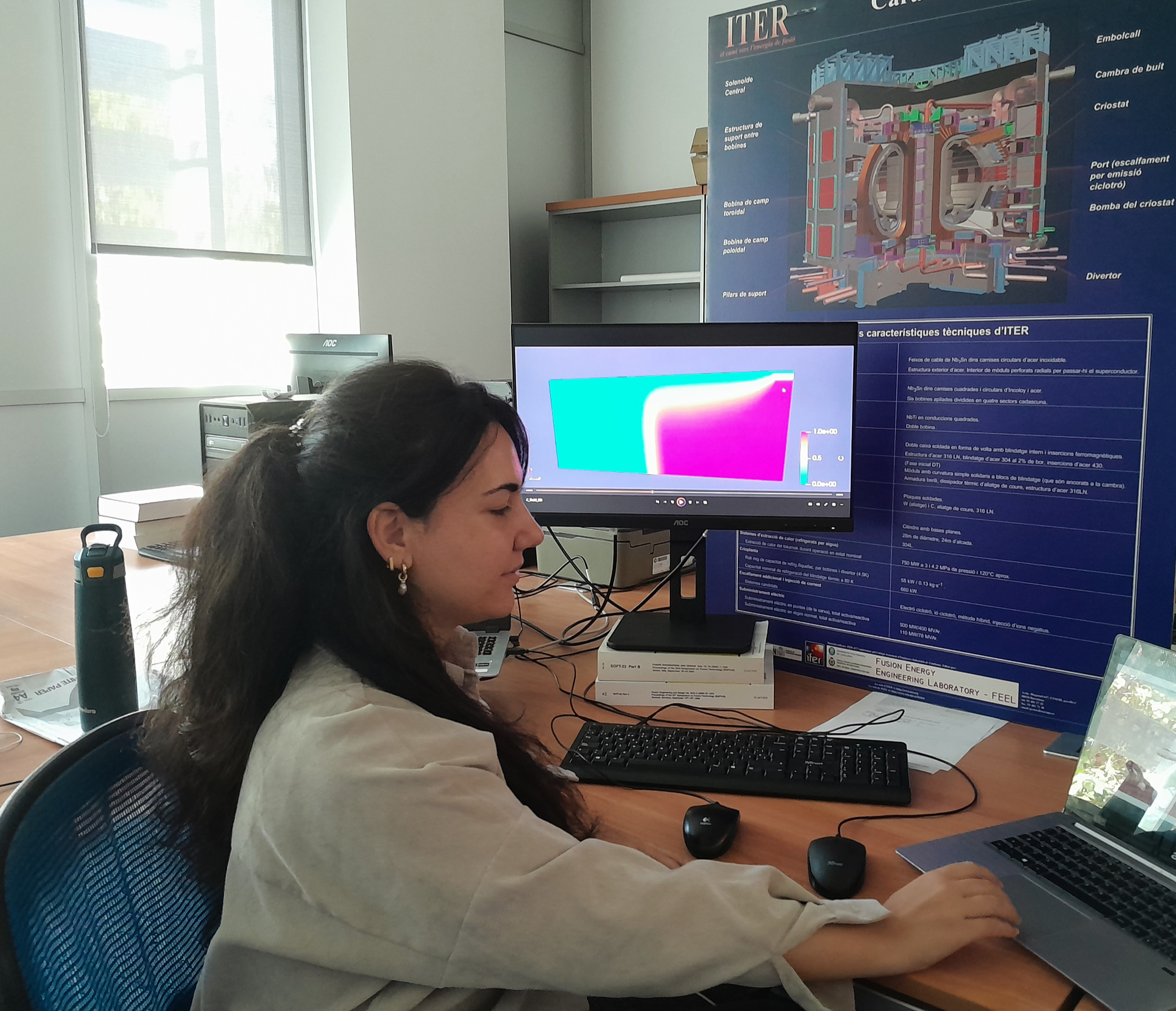1 Introduction
My master thesis project funded by Fusenet it’s shared between Politecnico di Torino, where I pursued my master’s degree in nuclear engineering, and UPC, where I spent a total of six months developing a CFD model of the Permeator Against Vacuum (PAV) using the opensource software OpenFOAM.
2 The topic and why it is important
The EUropean DEMOnstrator (EU DEMO) reactor should produce electricity from nuclear fusion in the 2050s, and one of the main challenges is to reach tritium self-sufficiency by means of a breeding blanket (BB). One of the BB designs developed, the water cooled lithium lead (WCLL) BB, adopts flowing lithium-lead (PbLi) as both the breeder material and the carrier for transporting tritium, produced within the BB, out of the blanket and into the tritium extraction and removal system (TERS). The PAV is a key component of the TERS and it’s a shell-and-tube configuration, where the tritium dissolved in the PbLi is forced to cross a metal (niobium) membrane by pumping the vacuum on the secondary side and eventually, after some reprocessing, is injected again in the core plasma, closing the fuel cycle.
It is evident that a clear understanding of tritium transport phenomena is imperative for optimizing the design and enhancing the efficiency of the PAV. However the tritium transport properties of PbLi and membrane materials found in literature (mainly solubility) have large uncertainties, underscoring the need for further investigation.
3 My hydrogen transport model
The model’s objective is to simulate the hydrogen permeation process through the liquid metal and the niobium membrane. To develop the model I used OpenFOAM, an opensource CFD software, because it allows a high degree of customization: in fact we were able to develop a set of tailored boundary conditions that are not available in commercial CFD softwares. Following a sensitivity analysis involving the main parameters of both the liquid metal and the membrane, it became evident that the limiting phenomena is the transport within the liquid metal, placing us within the Liquid Limited Regime (LLR). Consequently it became crucial to determine the turbulent mass transfer coefficient hT for hydrogen in PbLi, and develop a correlation for it. The current literature on this last topic is very limited.
4 Validation against experimental data
A fundamental step of this project was the validation of the numerical model against the recent experiments carried out at Brasimone Research Center (ENEA, Italy), to confirm the accuracy and reliability of the model. Two experimental campains were carried out with a PAV mock-up which used PbLi and hydrogen. To enable a meaningful comparison we adapted the initial model to accurately replicate the geometry and experimental conditions of the PAV mock-up. Multiple test were replicated, and the comparison with the hydrogen permeated flux revealed an error in the range of 27% - 40% (depending on the specific test) between the experimental and numerical results.
5 What I learned
Working on this project thought me many skills. I learned how to use an opensource software in Linux environment, reling on the community around it, and I learned how to build numerical solvers, starting from the problem’s governing equations. I learned how to deal with experimental data and uncertainties, and what it means to validate a model. I learned how to do extensive literature reviews and perform a sensitivity analysis.
Effective communication and collaboration with professionals from diverse backgrounds, from academia to research centers, enhanced my ability to work in interdisciplinary teams. This project would have not be possible without the effort of many different people: the guidance and mentorship from experts in this field both at UPC and Politecnico di Torino played a vital role for my understanding of this complex topic, and supported me while I further developed my numerical modeling skills
6 Conclusion
Thanks to Fusenet funding, this project has been a step forward in optimizing the Permeator Against Vacuum (PAV) within the DEMO reactor, in a collaborative effort between Politecnico di Torino and UPC. This experience has enriched me both professionally and personally: living and working in the vibrant city of Barcelona has been a remarkable chapter in my life. I look forward to contributing to the fusion energy field, while Fusenet’s support is advancing fusion energy research, moving us closer to a cleaner, more sustainable energy future.

